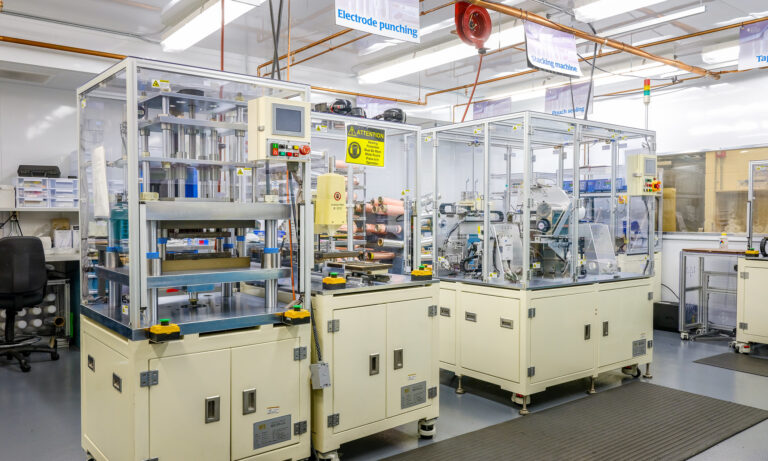
At the first high-level summit of the “Quad” grouping, the US, Australia, Japan and India agreed to jointly develop, finance, distribute and manufacture vaccines in order to increase vaccine production and to counter Chinese vaccine diplomacy. In this effort, India is set to play a crucial role.
Despite struggling to equal the Chinese outreach via infrastructure and investment projects in the region, the extensive pharmaceutical industry has given India the potential to counter the Chinese influence. This includes its own version of ‘vaccine diplomacy’.
India currently produces two vaccines — Covishield (a local version of AstraZeneca manufactured by Serum Institute) and Covaxin developed by Bharat Biotech International Ltd. India’s pharmaceutical industry ranks among the largest in the world, currently producing 60% of the world’s vaccines. The Serum Institute itself produces 2.5 million doses of Covishield daily.
China has, on the other hand, developed four vaccines (produced by Sinovac, Sinopharm, CanSino and Anhui Zhifei Longcom) and has pledged that its vaccines will be provided as “global public good“. Chinese production capacities remain unclear, but Chinese state media report that all vaccine producers combined could produce as many as 2 billion doses in 2021. China has also begun outsourcing vaccine production to other countries in order to augment its production capabilities.
The United Arab Emirates and Serbia pledged to manufacture Sinopharm, whereas Indonesia and Brazil are already manufacturing Sinovac. This strategy may intensify not only the production, but also the proliferation of Chinese vaccines. For instance, cooperation with the United Arab Emirates, the Middle-Eastern “vaccine hub”, which tested Sinopharm, donated it to Egypt and intends to export it to other countries, may have enhanced the credibility of Chinese vaccines among its regional partners.
Cracking the EU Market
Both China and India target mostly developing nations since they generally lack access to vaccines produced by Western companies. Moreover, all Chinese and Indian vaccines lack authorization of the European Medicines Agency (EMA) or the US Food and Drug Administration (FDA) to broaden their export market.
Thus, the Czech Republic has recently rejected an offer to buy AstraZeneca vaccines produced in India despite struggling with one of the highest death rates per population in the world. Still, given the production of the AstraZeneca vaccine, India entered the vaccine market in the United Kingdom and Canada. In addition, the EMA is currently auditing the Serum Institute which may open India the door to the EU.
Nonetheless, both Chinese and Indian vaccines have already entered the EU market through Hungary as it was willing to start inoculation with Sinopharm, regardless of the lack of approval by EMA. Subsequently, Hungary has recently approved also the vaccine produced by CanSino Biologics and Covishield. This practice, together with Chinese vaccines in use in several Balkan countries, especially Serbia, opened a broader discussion on using vaccine of non-Western provenience also in some EU member states – the Czech Republic and Poland have recently expressed consideration of Chinese vaccines.
The Battle Over the Developing World
Whereas India regularly updates information about the distribution of its vaccines, including the form of allocation and amounts of doses, China does not provide a coherent and transparent overview of its vaccine distribution. The figures cited are therefore chiefly sourced from news reports, including state media, which provokes a degree of skepticism. For instance, China announced a donation of 100,000 vaccines to Papua New Guinea, but this was later denied by the Papuan government. Similarly, China promised to deliver 300,000 vaccines to Myanmar, but so far the country has received a sizeable donation from India and nothing yet from China.
Based on publicly available data, China has pledged to donate approximately nine million vaccine doses to 33 countries. The vast majority of donations are Sinopharm vaccines. Sinovac has only been donated to the Philippines and Uganda so far. Chinese vaccines were also further indirectly donated to third countries, for instance, Senegal decided to share a portion of vaccines with neighboring Guinea-Bissau and the Gambia (Sinopharm), and Chile provided vaccines to Ecuador and Paraguay (Sinovac).
Despite struggles with the pandemic inside the country where the situation is one of the worst in the world, India does not lag behind. It has donated more than 8.5 million vaccines – to thirty-eight countries around the globe. In fact, this number reflects already administered doses and it is therefore assumed that India has donated more doses compared to China where it is difficult to distinguish between pledges and delivered doses. This outreach was partly enabled by the sluggish onset of the Indian domestic inoculation campaign. Nevertheless, since India accelerated the pace of the vaccination efforts, some of the deliveries abroad have been delayed as Indian government directed the vaccine manufacturers to prioritize the domestic population. Consequently, exports of AstraZeneca from India are temporarily suspended for a non-specified period.
The distribution of donations also merits attention. India directed the largest vaccine assistance to its neighboring countries, namely Bangladesh (2 million doses), Myanmar (1.7 million), Nepal (1 million), Sri Lanka (500,000) and Afghanistan (500,000) which correlates with the proclaimed “Neighbourhood First” policy. The only country which does not utilize the Indian vaccine in south Asia is, unsurprisingly, Pakistan.
China similarly focused its attention on the local partners, such as Cambodia (1 million), Laos (300,000), Philippines (600,000), Mongolia (300,000), Afghanistan (400,000) or Pakistan (500,000). Nevertheless, countries outside the region have often received comparable amounts, for instance, Uganda (300,000), Venezuela (500,000), Zimbabwe (400,000), Algeria (200,000) or Egypt (300,000).
Zooming out from the immediate neighborhood, further Chinese vaccine expansion started in the Middle East with the United Arab Emirates and Bahrain being the first countries in the world to authorize Sinopharm, which later encouraged also other countries in the broader region. Latin America became another target for the Chinese vaccines, with Brazil among countries testing Sinovac, in spite of dissent expressed by president Bolsonaro. Gradually, Sinovac found its way to almost all countries in the region.
Although India has also provided vaccines to Latin America and the Middle East, it is faster in “coloring” the map of the African continent which may be mostly attributed to the COVAX vaccine program, with shipments to Africa starting in late February. Both China and India joined the COVAX initiative aiming to ensure access to vaccines for developing countries. China pledged to contribute with 10 million doses and India with 200 million. Due to the initial reluctance of the US to participate in this program, China actively emphasized its involvement in the initiative and its willingness to share the vaccines with poorer countries, in comparison with the developed Western countries. Nevertheless, Chinese vaccines have not yet been approved by the WHO.

Points of Friction
As between China and Russia, where the competition mainly concentrates on Central Asia, there are also several “vaccine races” between China and India. The real competition remains in the closest neighborhood.
The first significant point scored for India was the vaccine purchase by Sri Lanka, where India and China have seen rising geopolitical tensions. India first donated 500,000 doses to Sri Lanka at the end of January and a month later, Sri Lanka ordered a further 13.5 million doses of AstraZeneca. Meanwhile, China announced its intention to donate 300,000 Sinopharm vaccines but this offer was rejected by the Sri Lankan official based on the incomplete process of the third phase of clinical testing and lack of documents required for registration. Eventually, Sri Lanka authorized Sinopharm for emergency use in March, which opened speculations about Chinese pressure.
India also provided one of its largest donations to Nepal, where it has been watching the rising clout of China with great concern. Sandwiched between these vaccine donors, Nepal first received one million doses from India, followed by a Chinese donation of half a million doses. The subsequent purchase of further vaccines came again from India, which is another crucial point for India given the deteriorated Sino-Nepalese relations due to their territorial disputes.
India was also the first to provide vaccines to Mongolia (150,000 doses), a country traditionally viewed as a Chinese sphere of influence. China immediately followed with a double amount of the vaccine. Presumably, Mongolia would not be so high in the list of priority countries was it not for the vaccine race between Beijing and New Delhi.
Meanwhile, China might have installed a strategy to pressure countries to opt for its vaccines. Several Chinese embassies have recently published a notice on visa facilitation for those inoculated by Chinese vaccines. This “vaccine discrimination” may compel countries to acquire Chinese vaccines, as this measurement may elicit demand among domestic populations which frequently enter China. This strategy may also prove to be beneficial to counter Indian vaccine distribution in the neighborhood.
Building Image and Seeking Goodwill
The rivalry has also been projected to the information campaign led by both India and China. Indian media focused predominantly on criticism of Chinese policy, questioned the credibility of Chinese vaccines and, for example, circulated information concerning alleged pressure on the Nepali government to accept Chinese vaccines without the necessary documentation. It also published news depicting a positive attitude towards Indian vaccines, such as the US Department of State applauding and tweeting “India’s a true friend using its pharma to help the global community”.
Indeed, in its self-presentation, India is no different from China. Both place their respective vaccine distributions in contrast to wealthy countries securing doses for themselves and overlooking the rest of the world. For instance, Indian Minister of External Affairs S. Jaishankar emphasized that the developing countries may see “that there is at least one major nation that truly believes in making vaccines accessible and affordable to others in dire need” and the Vaccine Maitri (“Vaccine Friendship”) initiative “generated great international goodwill”.
Chinese vaccine image building may be viewed as an extension of “mask diplomacy“. Similar to national presidents’ welcoming medical assistance, Chinese media are flooded with presidents being inoculated by Chinese vaccines and welcoming the deliveries at the airports. Furthermore, as with the “mask diplomacy”, China maintains its strategy of differentiated approach, providing some countries with donations, offering loans to others or directly selling the vaccines, at the highest prices in the world.
Targeting Indian vaccine efforts, Chinese media have contested the safety of Indian vaccines, stressed skepticism of the Indian population to be vaccinated and actively emphasized the spread of the virus in India, doubting the Indian capability to deliver vaccines given the current health conditions.
Domestically produced vaccines grant both countries the ability to consolidate their position within the region, but also widen global outreach. Despite being in China’s shadow on the vaccine front, India has a great manufacturing potential, and lacks the geopolitical ‘baggage’ connected to Russian and Chinese vaccines. China, on the other hand, may benefit from the relations based on economic cooperation and infrastructure projects which arouse loyalty among the political leaders, and the powerful apparatus of international media seeking to boost China’s image of a responsible power.
Written by
Veronika Blablová
Veronika Blablová is an analyst at CEIAS.


